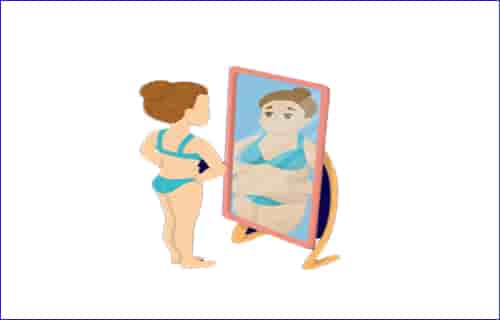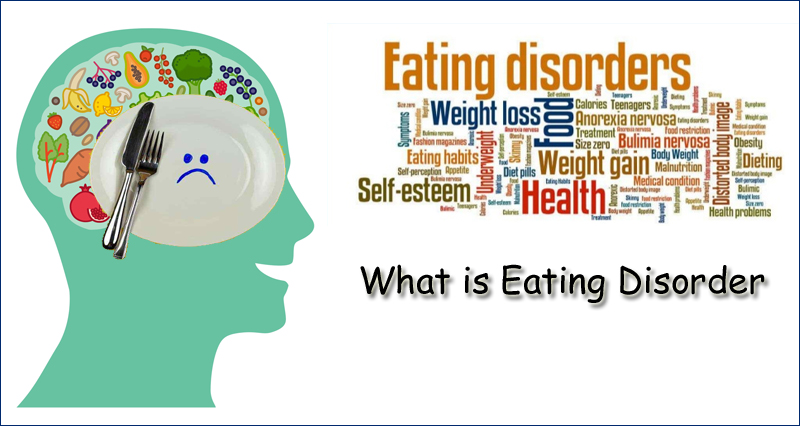Introduction
“11 Types Of Eating Disorders It is a mental Eating disorder defined by abnormal habits which negatively affect a person’s physical and mental health, emotions, and ability to work in any area of life, The most common disorders are anorexia nervosa, bulimia nervosa, etc. Mostly it involves focusing too much on weight, body shape. It is harmful to the heart, mouth, bones, and digestive system and also leads to many other diseases. Mostly it develops in the teen and young adult”
How did eating disorder begin
Eating disorders develop due to unbalanced neurotransmitters in the brain, one being serotonin, which has a central role in anxiety and depression, both are common in anorexia and bulimia. It can be seen in a brain scan of the person with this disorder get too little serotonin. An eating disorder does not start instant. The eating disorder takes some time to develop, maybe a few weeks to few years. It begins differently in every person. In some person it may be for losing some weight for others it may be due to stress, trauma, or depression.
11 Types Of Eating Disorders

1. Binge eating disorder
where the patient eats a large amount of food in a short time. People feel a lack of control over overeating. The patient may eat quickly even when he is not hungry, and continue to eating even long after and feels uncomfortable.
2. In Anorexia nervosa
people eat a very little amount of food due to the fear of weight gain and try to maintain their low body weight. People suffering from anorexia use extreme efforts to control their weight and shape, which interferes with their health and life activities. People take limited calories or use other methods for weight loss some take laxatives even though they are already underweight.
3. In bulimia nervosa
patients eat a lot thereafter try to rid them of the food. The patient feels a lack of control over eating, they eat a large quantity of food in a short period. And try to get rid of extra calories themselves in an unhealthy manner. They may force vomit or take laxative pills. They should avoid self-medication and obtain the advice of a specialist.
4. In pica patient eat non food items
In pica, patients eat non-food items that have no nutritional value such as, ice or they may eat dangerous items such as, flakes of dried paint or piece of metal.
5. In rumination syndrome
In rumination syndrome patient regurgitate food. The patient repeatedly regurgitating food after eating, but it is not due to a medical condition or another eating disorder. After eating food is brought back up into the mouth without nausea or gagging, and regurgitation may not be intentional. It may result in malnutrition.
6. In avoidant food
In avoidant food intake disorder patients have selective food intake thus fail to meet minimum daily nutrition requirements because patients don’t have an interest in eating due to certain sensory characteristics, such as color, texture, smell, or taste or fear of choking. This disorder leads to significant weight loss or failure to gain weight in childhood, as well as nutritional deficiencies which other health problems.
7. Emotional eater
These types of people eat when they are happy. Some people eat more when they are sad or under stress. Eating when they are not hungry even when their stomach is full.
8. Habitual eater
These people eat the same food daily. The difficulty of these types of eaters is they can burn out and when they do that can lead to binge eating.
9. Critical eater
These types of eaters are on top of every bite. They know about every diet in the book and tried them frequently.
10. Sensual eater
These types of eaters trying to enjoy new food daily. They always think to try daily different types of food.
11. Energy eater
They try to eat daily many calories
The reasons for the above disorder are not clear, though both biological and environmental factors play a role. Eating disorders affect dancers, individuals. Some disorders such as pica and rumination disorder happen more frequently in people with intellectual disabilities, Only one disorder can be diagnosed at a given time.
However, it falls under the category of mental disorder. Symptoms vary, depends on eating habits. It is difficult to manage the above themselves. It is a very dangerous and life alarming disease.
Patients are required to get proper advice from a medical specialist in the matter.
1. Proper counseling
Proper counseling is necessary with regard to the development of proper intake of food habits. The patient is advised to maintain proper hygiene at the time of cooking food, take healthy food, wash them properly before cooking, proper handwashing before and after cooking the food.
2. Proper diet
Proper handwashing before and after Taking food, do not take less amount of food or a large amount of food. Intake food in a calm condition. Do not take uneatable items.
3. Proper exercise
Proper and daily exercise is necessary with regard to overcoming this disease. Approximately 30 minutes of daily exercise is necessary for good health.
4. In addition
In addition to the above, proper medication under the supervision of specialists is also necessary for the recovery of health.
FAQ
Q. What qualifies as an eating disorder?
Ans. An eating disorder is a serious mental illness, characterized by eating, exercise, and body weight or shape of the body becoming an unhealthy preoccupation of someone’s life.
Q. What causes eating disorders in females?
Ans. The actual cause of the eating disorders is not known. However, there may be many causes, such as genetics and biology. Some people may have genes that may increase the risk of eating disorders.
Q. How many types of eating disorders?
Ans. It is of many types such as Emotional eater, habitual eater, unconscious eater, critical eater, sensual eater, energy eater.
